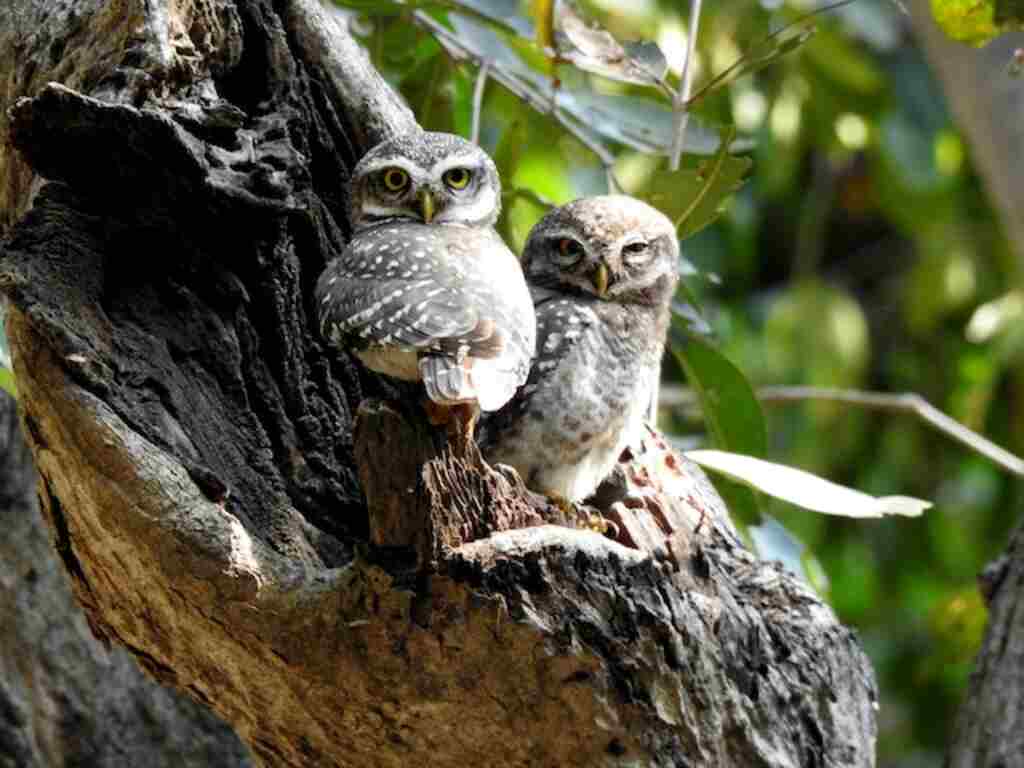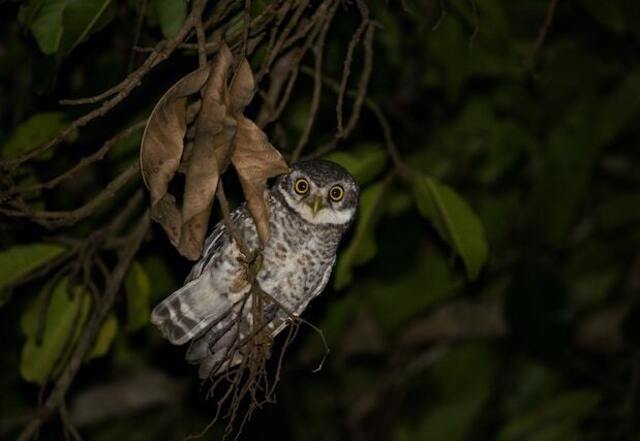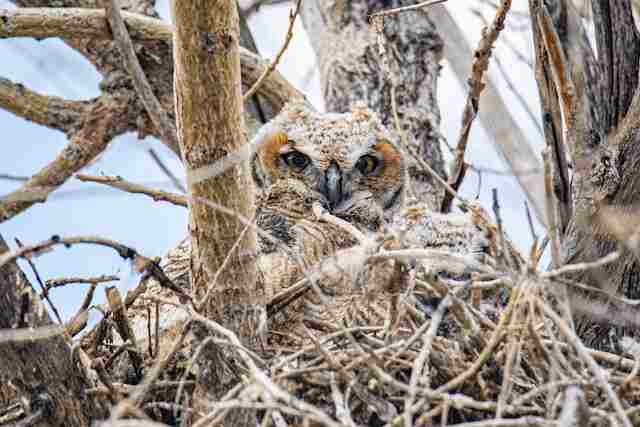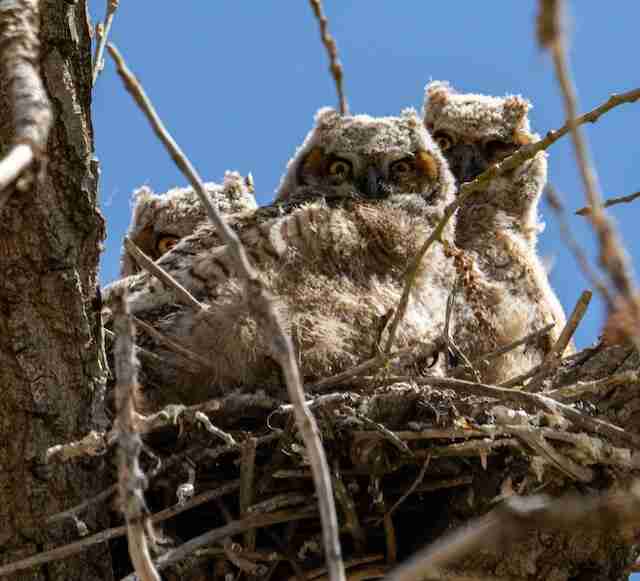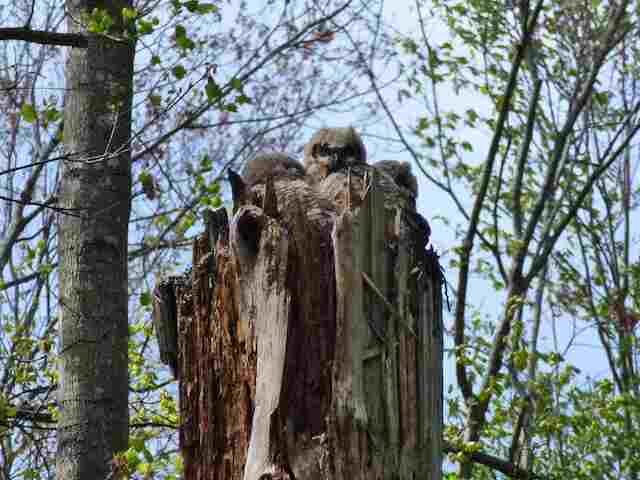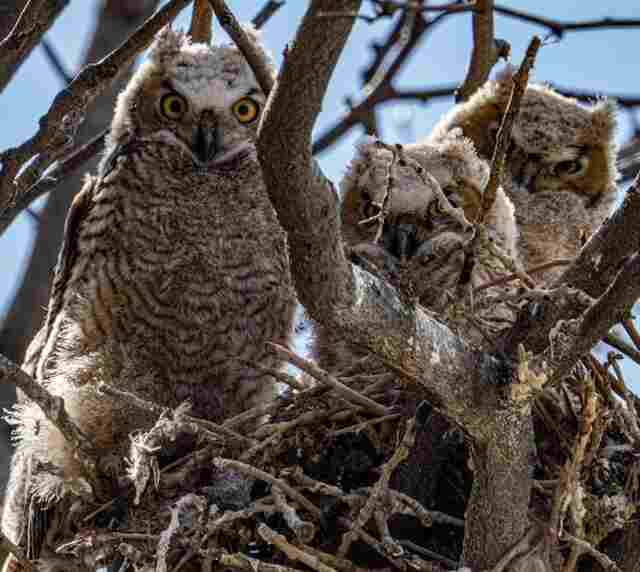When Do Owls Have Babies? If you’ve ever wondered about the timing of owl reproduction, you’re not alone! These fascinating birds have a unique breeding cycle that varies by species and location.
In this article, we’ll explore the factors that influence when owls have owlets, including the role of climate, food availability, and more.
Whether you’re an owl enthusiast or just curious about the wonders of nature, you won’t want to miss this informative and entertaining read.
Table of Contents
- 1 The Fascinating World of Owls: Understanding Their Breeding Habits
- 2 When do owls have babies?
- 3 Factors that Influence Owl Breeding
- 4 Nesting Habits of Owls
- 5 Owl Mating Rituals: Love is in the Air
- 6 Courtship Behaviors Displayed by Male and Female Owls
- 7 The Role of Vocalizations in Mating
- 8 Incubation and Hatching Process
- 9 Raising Baby Owls
- 10 Conclusion:
- 11 Author
The Fascinating World of Owls: Understanding Their Breeding Habits
Owls are fascinating nocturnal birds of prey, known for their big eyes, sharp talons, and silent flight. There are over 250 species of owls worldwide, each with unique physical characteristics and behaviors.
Owls have a reputation for being mysterious creatures, often associated with magic and superstition. However, they play an important ecological role in maintaining healthy ecosystems.
Understanding owl breeding habits is crucial to their conservation and management. Owls have a complex breeding cycle that varies depending on the species and region they inhabit.
For many species of owls, the breeding season is influenced by climate and food availability. During the breeding season, male owls will court females through vocalizations such as hooting or trilling.
The courtship displays will often involve both birds puffing up their feathers or bringing food to the female as a gift. Once mating has occurred, the female will lay her eggs in a nest built by the pair or found within natural cavities like tree holes or old nests from other birds.
The size of the clutch –the number of eggs laid- can also vary depending on the species. Knowing when the owl breeding season occurs helps us to manage habitats to support healthy populations as well as minimize our impacts on them during this critical time in the bird’s life cycle.
Owls need safe nesting sites that are free from disturbance during incubation and hatching stages; furthermore preserving habitat provides access to prey needed for feeding themselves and their young ones.
In this article, we will delve deep into this subject exploring all aspects related to owl’s breeding habits which make them so unique in comparison to other bird species living around us!
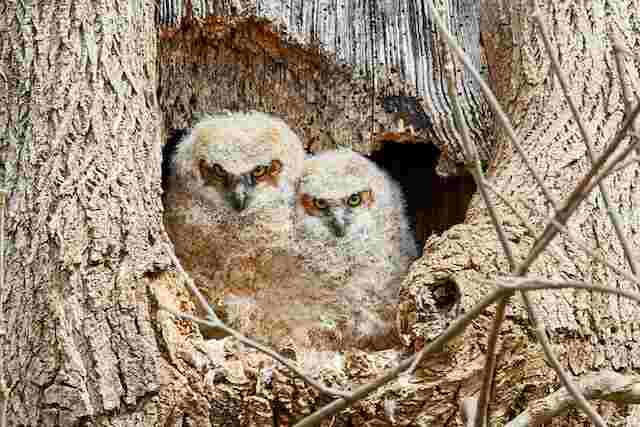
When do owls have babies?
Most species of owls tend to breed during the spring months. This breeding period typically begins from December and extends through to April.
The breeding season can vary slightly depending on the location and climate of an owl’s natural habitat. For example, snowy regions will have a shorter breeding season compared to warmer areas.
Explanation of owl breeding season
During this period, male owls will hoot and sing loudly to attract a mate. Once paired, they will engage in courtship displays such as dancing, head-bobbing, and preening each other’s feathers.
Once mating has occurred, the female owl will begin preparing to lay her eggs. Different species of owls have different breeding seasons based on their natural habitats and mating habits.
For instance, some species like the Barn Owl may begin nesting as early as February or March while others like the Screech Owl may not start nesting until May or June.
Different breeding seasons for different owl species
The timing of owl breeding seasons can also vary based on geographic location. In colder regions such as Canada or Alaska where winter sets in early, owls may begin nesting much earlier than their counterparts in warmer areas like Mexico or South America.
Some species of owls like the Great Horned Owl are adaptable and can breed throughout most times of the year when conditions are favorable.
Others like the Northern Hawk Owl only reproduce every few years when food sources are abundant enough to support their young.
Understanding these differences between different species’ mating habits is crucial for those interested in studying or conserving these magnificent creatures.
Consequently, it is important that we take steps to conserve habitats that support healthy populations so that we continue to enjoy their presence for generations to come.
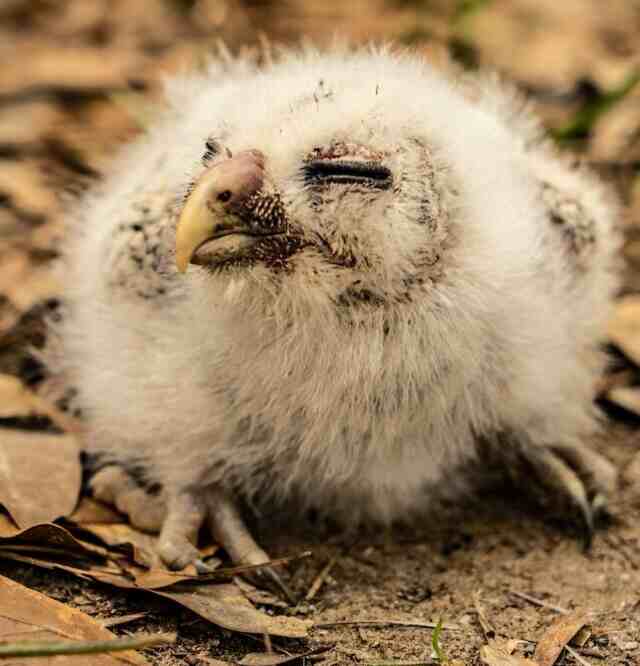
Factors that Influence Owl Breeding
Climate and Weather Patterns
Owls are highly influenced by climate and weather patterns during their breeding season. In general, owls tend to breed during the winter months, when food sources are more abundant.
However, extreme weather conditions, such as prolonged periods of cold or heavy rain, can have negative impacts on owl breeding success.
For example, if there is an extended period of cold weather, owls may have trouble finding enough food to sustain themselves and their young.
Availability of Food Sources
The availability of food sources is a critical factor in owl breeding success. Owls need to consume a lot of calories during the breeding season to provide for their young.
They tend to hunt at night when prey species are most active and use their exceptional hearing and eyesight to locate prey.
However, the availability of prey can vary depending on factors such as population density and seasonal fluctuations. As a result, owls may choose not to breed in years when food sources are scarce.
Habitat and Nesting Options
The type of habitat available for owls to nest in can play a significant role in their breeding success. Many owl species prefer to nest in wooded areas with plenty of trees for roosting and hunting opportunities nearby.
Owls also require suitable nesting sites that provide shelter from predators and harsh weather conditions. Some common nesting sites include tree cavities, abandoned buildings or barns, and artificial nest boxes installed by conservation organizations.
Several factors influence owl breeding success including climate patterns that affect food availability; an inadequate supply of prey species; unsuitable habitats without adequate shelter; lack of appropriate food source requirements (e.g., proteins) necessary for egg-laying stage development which reduces fertility rates among female birds – all these factors can impact the survival rate among newly hatched baby owls.
It is essential to understand and address these factors to ensure the long-term survival of owl populations in the wild.
Nesting Habits of Owls
Types of Nests Used by Different Owl Species
Owls are fascinating creatures that have adapted to different environments. These birds of prey have unique nesting habits and will nest in any cavity they find suitable.
Some species of owls such as the barn owl, snowy owl, and great horned owl choose to nest in tree cavities or abandoned nests left behind by other birds.
Other species like the burrowing owl will nest underground while others like the screech owl may make their homes in birdhouses. The size and shape of an owl’s nest are dependent on the species and available nesting material.
For example, barn owls build shallow nests made up of pellets regurgitated from their stomachs while great horned owls create platform-like nests made up of sticks, grasses, and pieces of fur or feathers.
Snowy owls create a simple scrape on the ground lined with whatever vegetation is around.
Unique Characteristics of Owl Nests
Owl nests are unique structures that are built for specific purposes such as sheltering eggs or raising young ones. One characteristic that makes these nests stand out is how they can be used for several breeding seasons. Owls will return to their previous year’s nesting sites if it served them well before.
Another unique feature is their ability to camouflage themselves with their surroundings; this makes it difficult for predators like hawks to locate them easily while providing ample protection from weather elements since they blend into their environment.
Owls’ nesting habits vary depending on different factors such as location, food sources, and available materials. Different species create different types and sizes of nests for protection while laying eggs or raising young ones.
Their nesting features ensure adequate protection against rough weather elements and camouflage them from danger when necessary making it one interesting topic to explore further!

Owl Mating Rituals: Love is in the Air
Owls, like many other bird species, have a unique set of mating rituals that they engage in during the breeding season. These rituals are intricate dances between males and females, involving displays of strength, agility, and vocalization.
The courtship process usually begins with the male owl seeking out a mate and displaying his prowess in order to win her favor. One common behavior displayed by male owls is called “tidbitting”.
This involves the male bringing food to the female as a way of showing off his hunting ability and providing for her.
The female may also engage in similar behaviors such as presenting herself for grooming or bringing small twigs or other materials to the male.
Vocalization plays a key role in owl courtship as well. Male owls will often hoot loudly and repeatedly to establish their territory and attract a mate.
Female owls may respond with their own hooting calls as a way of indicating interest or communicating their location. This vocal communication can continue throughout the mating process up until eggs are laid.
Courtship Behaviors Displayed by Male and Female Owls
The courtship process for owls varies depending on their species but there are some common behaviors that both males and females display during this time.
Some species have elaborate dances that involve synchronized movements while others rely more heavily on vocalizations to communicate.
For example, Barn Owls often engage in “moth flights” where two birds fly together in circles around each other before mating.
Snowy Owls on the other hand may perform an aerial dance where they fly near each other while displaying their talons.
In addition to these physical displays, both males and females may engage in grooming behaviors as well as sharing food with one another.
These courtship behaviors serve to strengthen the bond between mates before they begin nesting.
The Role of Vocalizations in Mating
Vocalizations play a crucial role in owl mating rituals. Male owls will call out loudly and repeatedly in order to defend their territory and attract a mate.
Female owls may respond with their own hooting calls as a way of indicating interest or communicating their location. The quality and frequency of these vocalizations can also indicate the health and genetic fitness of the owl.
Females are more likely to choose males that have strong, consistent calls as it indicates good health and the ability to provide for offspring.
In some species, duetting is also common during the mating process where both males and females will call out together in order to establish territory or communicate with each other.
This complex vocal interaction between mates serves not only as a way of attracting one another but also strengthening bonds that are necessary for successful breeding.
Incubation and Hatching Process
Length of Incubation Period for Different Owl Species
The incubation period of owls varies depending on the species of owl. For example, the incubation period for a Barn Owl is around 32 days, while it can take up to 70 days for an Eagle Owl’s eggs to hatch.
Overall, the average incubation period for most owl species is between 27-35 days. During this time, the mother owl will stay on or near the nest while the father owl brings her food.
Description of the Hatching Process
Once the eggs are ready to hatch, the baby owls will start to peck at their shells with their egg tooth. This small pointed structure on their beak helps them break through and emerge from their shell.
Often times you can hear faint chirping sounds coming from inside the egg as they prepare to break out. Once hatched, baby owls are covered in a thin layer of downy feathers which help them regulate their body temperature until more feathers grow in over time.
They are born with closed eyes and initially rely solely on their parents for food and warmth. One interesting thing about baby owls is that they don’t all hatch at once!
Some may hatch several days before others so you can have a range of ages within one family group. Overall, watching an owl family go through this process can be fascinating as they work together to bring new life into the world.
Raising Baby Owls
Parental Care Provided by Mother and Father Owls
Once the baby owlets have hatched, both parents play an active role in their upbringing. The mother owl provides most of the direct care in the early stages, such as brooding and feeding, while the father’s main role is to hunt for food to bring back to the nest.
However, as the owlets grow older, both parents share in all aspects of parenting including feeding and caring for their young. In some species of owls where food is scarce, it’s not uncommon for one parent to leave during breeding season.
This doesn’t mean that they are abandoning their partner or offspring; rather, it’s a strategy to increase chances of survival. The remaining parent will still provide adequate care for their young.
Stages in the Development of Baby Owls
Owlet development can vary among different owl species but typically follows a similar pattern. Initially, newly-hatched owlets have a thin layer of white down feathers called natal down which is replaced by thicker feathers later on.
For instance, Great Horned Owl chicks grow about an inch each day within 10 days from hatching.
The first few weeks after hatching are considered critical for baby owl development because they are still very dependent on their parents for warmth and food.
By around three weeks old or so, depending on the species, they start moving around within the nest and flapping their wings to strengthen them.
By four or five weeks old (or even more) depending on the species again – they will be ready to fledge or leave the nest.
As with all birds of prey including eagles and hawks who mate for life as some owl species do too; baby owls often stay near their parents’ territory after leaving home until they mature enough to find territories of their own and raise their own families.
Conclusion:
Recapitulation on When Do Owls Have Babies
Knowing when owls have babies is crucial in understanding their breeding behaviors and population patterns.
Different owl species have different breeding seasons, with some species breeding year-round while others have specific times of the year for mating and nesting.
Factors such as climate, food availability, and habitat also play a significant role in owl breeding habits.
The Importance of Preserving Habitats to Support Healthy Populations
Preserving habitats is essential in protecting owls and their offspring. As predators at the top of the food chain, maintaining healthy populations of owls is critical in maintaining ecosystems’ balance.
Habitat destruction through deforestation or urbanization can lead to a decline in the owl population. Therefore it’s necessary to protect natural habitats or create artificial homes such as nest boxes for them.
By creating wildlife sanctuaries and parks that provide safe habitats for owls to live and breed, we can ensure these magnificent creatures will continue to thrive for years to come.
An Optimistic Spin on the Material
While human activity has caused many challenges for wildlife populations worldwide, there are still many things we can do to help preserve our natural world.
By educating ourselves about when owls have babies and other important biological information about animal species living near us, we can make informed decisions that will help support their survival.
We all share this planet with each other’s inhabitants; therefore, it’s our responsibility to promote healthy coexistence with nature by preserving habitats where animals such as owls can thrive while still enjoying modern society’s benefits.
If we all work together towards a common goal of sustainability through conservation efforts, future generations will be able to enjoy these magnificent creatures just as we do today.

